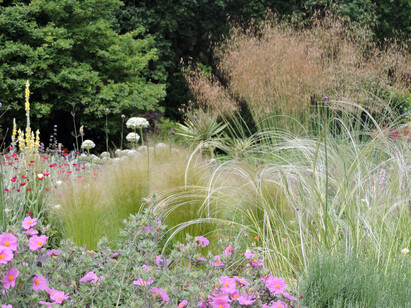
A genus of around 300 perennial grasses whose foliage, flowers and seedheads add texture, movement and structure to borders. The range of stipas grown here in the garden includes a mix of both evergreen and deciduous varieties. Evergreen grasses keep their foliage all year round whilst the foliage of deciduous types dry out as the season progresses and eventually die, ready to reshoot when spring arrives and the soil warms up.
Here, we treat the foliage of evergreen and deciduous grasses in the same way and cut plants down to a neat dome shape in late winter. Although the foliage on evergreen grasses hasn’t died back in the same way as deciduous types, the appearance of the coming seasons foliage is greatly improved by giving them a good cut to encourage fresh growth. If you don’t want to cut back your evergreen grasses in late spring, it is still advisable to comb through the foliage with a rake or your hands (wear gloves to avoid cuts) to remove any dead thatch that has collected over winter.
Late winter, before new foliage begins to appear, is the perfect time to divide grasses either in pots or in the ground. This helps to avoid root congestion and to ensure plants remains vigorous. This will usually need to be carried out every 2-3 years depending on the grass and growing conditions.
All the stipas grown here in the garden thrive in full sun and a light, free draining soil. Many also give a long display, standing up well to the winter weather.
Stipa barbata (Feather grass)- a wonderful, elegant grass for a dry spot. Thin grassy leaves appear above neat clumps of long, silky, silvery-green awns which wave and shimmer in the slightest breeze. As the flowers mature, they dry and curl into a soft feathery bundle. Each curling stem has a seed attached which corkscrews into the soil anchoring the seed in place. Slow to establish, but once settled, makes and exceptional feature in the garden. This stipa reaches 1.2m in height and 30cm in width.
Stipa barbata
Stipa calamagrostis (Rough feather grass)- produces graceful fountains of elegant, narrow green leaves which are topped with large, long-flowering, feathery plumes of soft buff. A slightly, lower growing stipa with a height of 90cm but with a spread reaching 1.2m.
Stipa calamagrostis
Stipa calamagrostis 'Allgäu' (Rough feather grass)- a grass with slender, green arching leaves. It produces feathery soft, green-white plumes, with flowers and foliage ageing to buff as they mature. This cultivar produces larger flowers compared with the species. Plants reach 1m x 1m.
Stipa calamagrostis 'Allgäu'
Stipa gigantea (Golden oats grass)- a dramatic, statement plant, not only because of its size, but also because of the large heads of oat-like flowers which shimmer in the soft morning and evening sunlight as if they are made of gold. An impressive feature in the garden reaching 1.8m high and 1.8m wide.
Stipa gigantea
Stipa gigantea ‘Alberich’ (Golden oat grass)- a new form from Peter Janke in Germany which seems to be a dwarf form of Stipa gigantea. This cultivar reaches 70cm x 70cm.
Stipa gigantea 'Alberich'
Stipa gigantea ‘Gold Fontaene’ (Golden oats grass)- originally a selection made by the German nurseryman Ernst Pagels, this form is larger than the species. Open panicles of large, golden spikelet’s are produced in late spring which become straw-coloured as the season progresses. This giant grass typically reaches 2.5m in height but can reach 3m if growing conditions allow.
Stipa gigantea 'Gold Fontaene'
Stipa ichu (Peruvian feather grass)- produces dense clumps of elegantly arching, upright, narrow green foliage topped by wispy silver plumes which develop into frothy seed heads in autumn. A wonderful addition to the winter landscape. S. ichu reaches 1m tall and 60cm across.
Stipa ichu
Stipa pseudoichu (Peruvian feather grass)- taller than Stipa ichu with longer flower spikes but with the same upright green leaves with graceful silvery arching flower heads in late summer which persist well through the winter months. This variety reaches 1.5m in height and 1m wide.
Stipa pseudoichu
Stipa splendens (Chee grass)- has grown in the Gravel Garden for many years producing a tight clump above which attractive, thin flower spikes shoot out in all directions. This stipa reaches 1.2m in height and 1m wide.
Stipa splendens
Stipa tenuissima (Mexican feather grass)- the fine, light foliage of this stipa wave on the slightest breeze. Plants produce an almost year-round display of silver-green flower heads, each seed tipped with a long silky filament. The free-draining, nutrient poor soil of our Gravel Garden keeps plants sturdy and upright. In summer, plants can become weighed down by the seeds produced. By combing through the foliage with your hands, the seed can easily be removed to allow foliage the freedom to move again. Plants can be easily propagated by seed and as plants seeds around, their offspring can be removed from where they pop up and potted on for new plants. Plants reach 60cm in height and 30cm wide.
Stipa tenuissima
Read on: Ornamental Grasses for Autumnal Interest
Written by Leanne Crozier
![]()
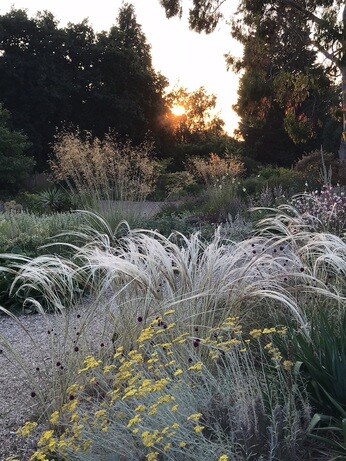
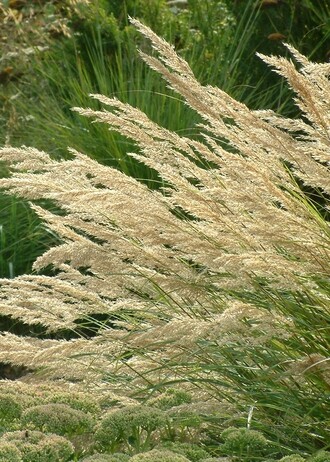
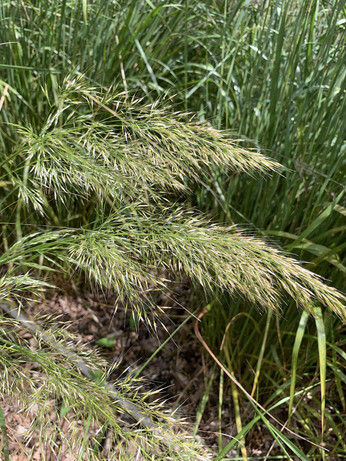
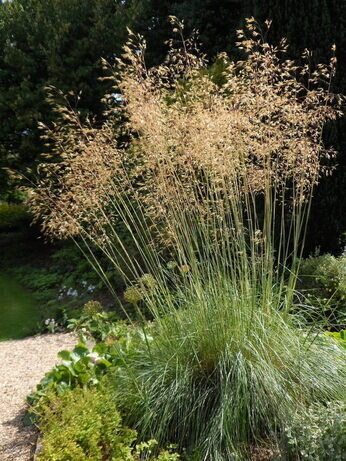
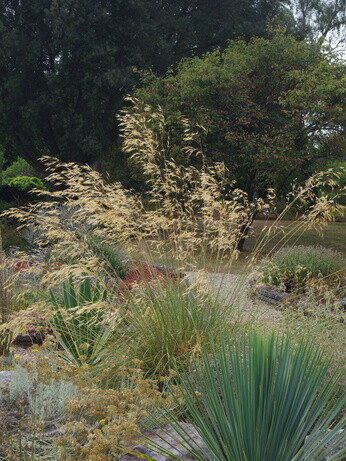
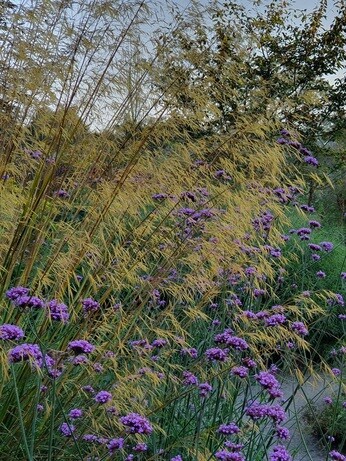
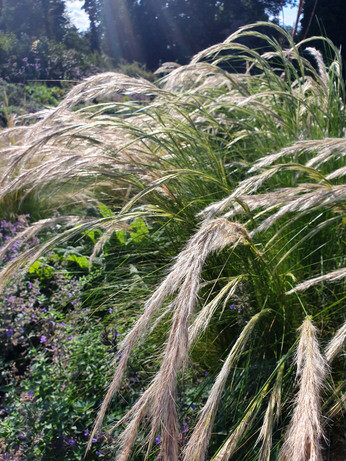
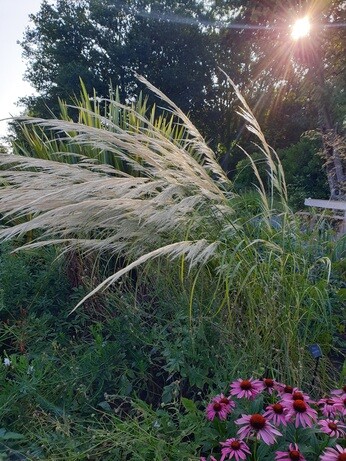
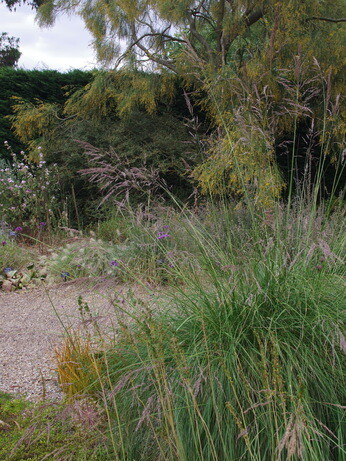
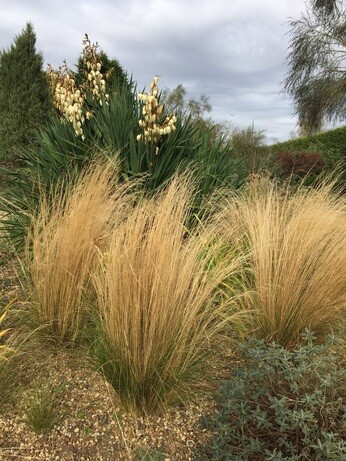
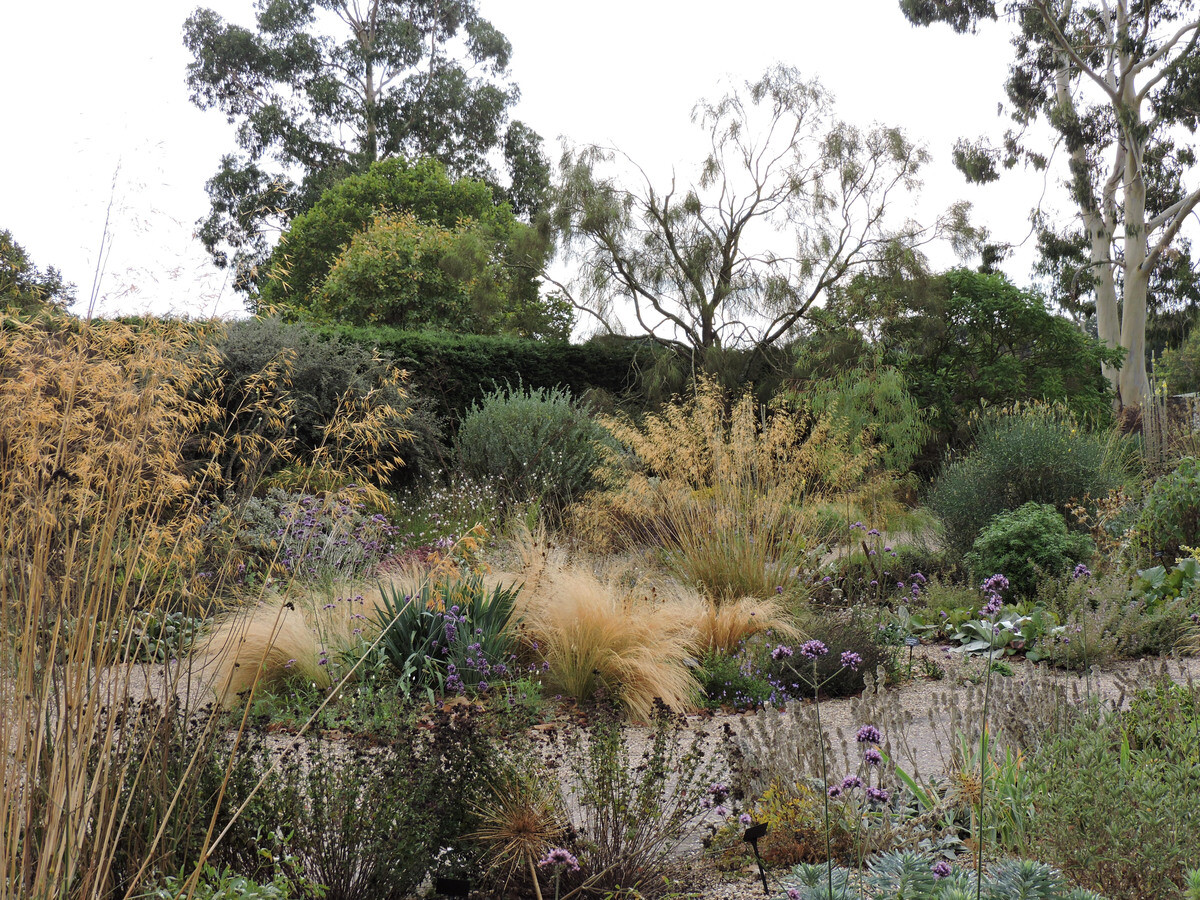

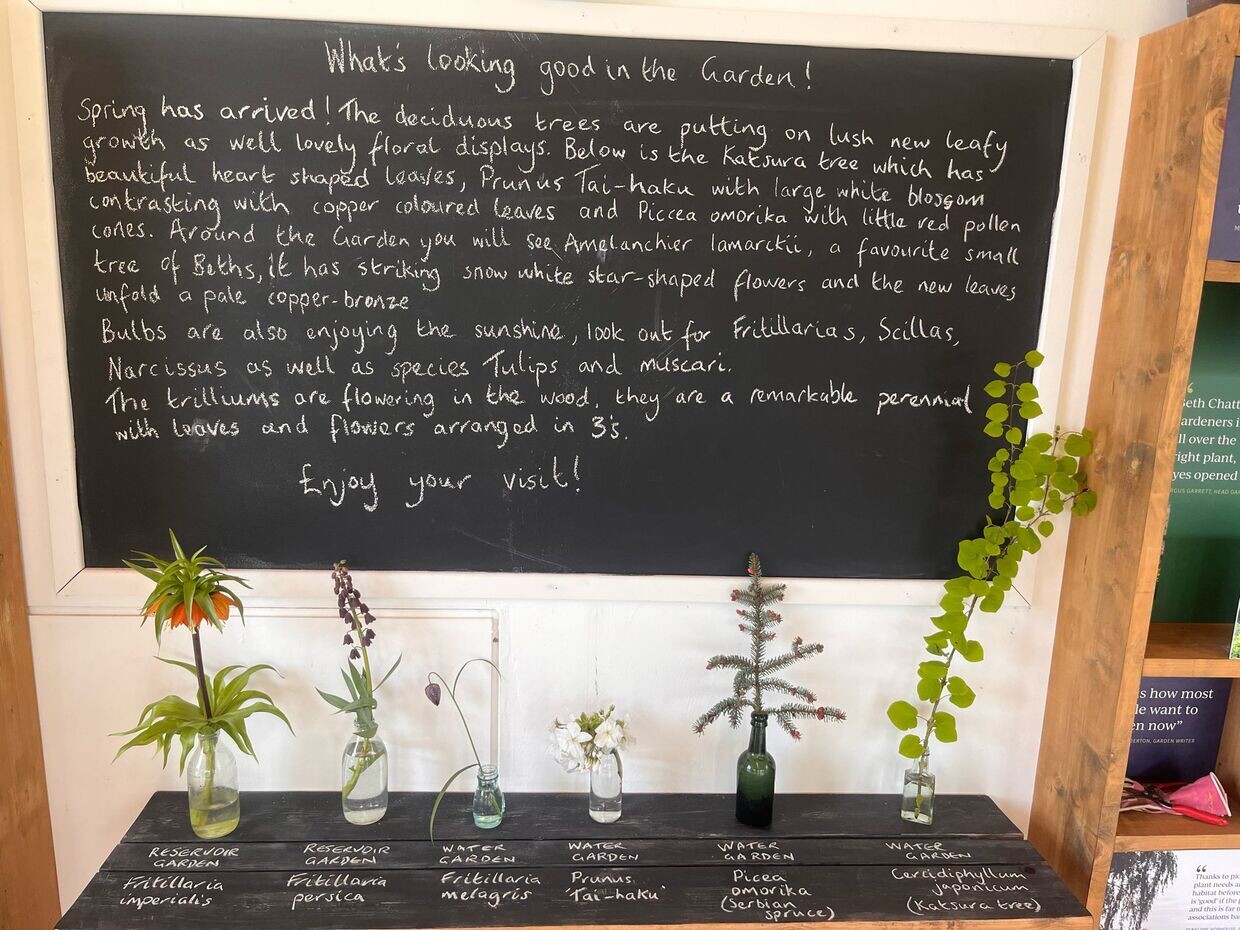

Comments